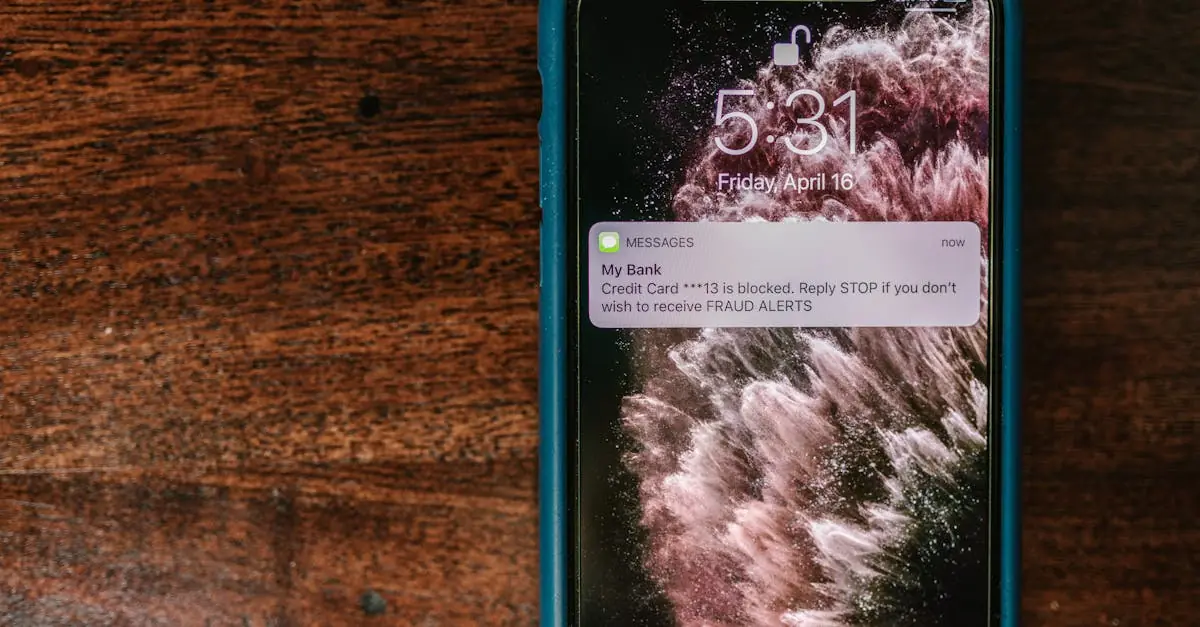Ever wondered if you’ve been unceremoniously booted from someone’s iPhone contact list? It’s a modern-day mystery worthy of a detective novel. Picture this: you send a text, eagerly awaiting a response, only to be met with deafening silence. Is it a busy schedule or have you been officially ghosted?
Table of Contents
ToggleUnderstanding Blocking on iPhone
Blocking on iPhone refers to preventing someone from contacting you through calls, texts, or FaceTime. This action can lead to confusion for those on the receiving end, as they may not realize they’ve been blocked.
What It Means to Be Blocked
Being blocked means that the blocked person can no longer communicate via traditional means. No calls, no texts, and no FaceTime notifications reach the individual. In practical terms, any attempt to connect results in silence, leaving the sender in the dark about their message’s fate. The blocked contact remains unaware unless informed directly by the person blocking them.
Signs You May Be Blocked
Several signs indicate possible blocking on iPhone. First, texts sent to the person display one gray checkmark instead of two, signaling non-delivery. Calls may lead to immediate voicemail without ringing, suggesting they never reached the recipient. Also, attempting to use FaceTime may show a failed attempt message. Users should note that these signs aren’t definitive proof of being blocked, as network issues could also cause delays or failures.
How to Check If You’re Blocked on iPhone
Determining if someone has blocked you on iPhone requires a few methods. Consider the following steps for clarity.
Using Call Logs
Reviewing call logs offers insight into your status. If calls to the person go straight to voicemail without ringing, this can signal a block. Repeatedly receiving one ring followed by voicemail might confirm suspicion. Checking for the absence of recent call details can also provide clues. If nothing appears in the logs, it’s worth noting.
Sending Text Messages
Sending a text message is another way to assess the situation. When you send a text and see only one gray checkmark, this indicates that the message hasn’t been delivered. If the person previously replied, this change is significant. It’s best to try messaging them again after some time. Observing the behavior consistently can help determine if you’re blocked.
Trying FaceTime
FaceTime can reveal potential blocking as well. Attempting to call via FaceTime might show a failed connection. If the call ends abruptly or indicates the recipient is unavailable, a block could be in place. Also, repeated failures to connect after successful past calls are worth noting. Trying again after a while, if possible, may yield different results.
Other Ways to Confirm Block Status
Exploring additional methods can clarify whether someone has blocked you on iPhone. Utilizing these techniques offers more insight into your communication status with the individual in question.
Third-Party Apps and Services
Various third-party applications exist to determine whether someone has blocked your number. Call-blocking apps provide features that show whether calls are being redirected or silenced. Some messaging apps indicate delivery status by showing read receipts or active online statuses. Relying solely on these apps isn’t always reliable; they may incur additional privacy concerns. Always check reviews and permissions before downloading any app to ensure safety and credibility.
Asking Mutual Contacts
Engaging mutual friends can provide further information about your block status. They may know whether the person has intentionally cut off communication or is dealing with other factors affecting their responses. Discussing the situation with a trusted friend fosters transparency and may reveal insights into the recipient’s behavior. Discretion is crucial; approach the matter sensitively to respect all parties involved. Keep conversations casual, and let your contacts share insights without pushing them too hard.
Potential Reasons for Blocking
Several factors might lead someone to block another individual on an iPhone. Understanding these reasons provides clarity in confusing situations.
Personal Conflicts
Personal conflicts often lead to blocking. Disagreements can escalate, resulting in the need for distance. If misunderstandings remain unresolved, one person may choose to cut off communication. Emotional stress also plays a role; it may be easier for someone to block rather than face confrontation. Past experiences with the individual can dictate the choice to block, especially if the relationship was tumultuous. Recognizing this dynamic helps unravel the mystery of being blocked.
Privacy Concerns
Privacy concerns frequently motivate individuals to block contacts. Some people prioritize their personal space and prefer to limit communication with certain individuals. In instances of harassment or unwanted attention, blocking serves as a protective measure. Users may feel overwhelmed by persistent messages, prompting a block for mental well-being. Others seek to maintain boundary control, fearing that unwanted calls or texts to invade their privacy. Understanding these motives clarifies how privacy shapes communication choices.
Navigating the complexities of communication can be challenging especially when uncertainty arises. Discovering whether someone has blocked you on their iPhone can lead to a mix of emotions from confusion to concern. By observing specific signs and utilizing various methods to investigate the situation individuals can gain clarity about their communication status.
Understanding the reasons behind blocking can also provide valuable insights into personal relationships. Whether it’s due to conflicts or privacy concerns recognizing these dynamics can help in addressing the situation more effectively. Ultimately maintaining open communication and respect for boundaries is essential in any relationship.




